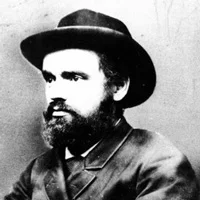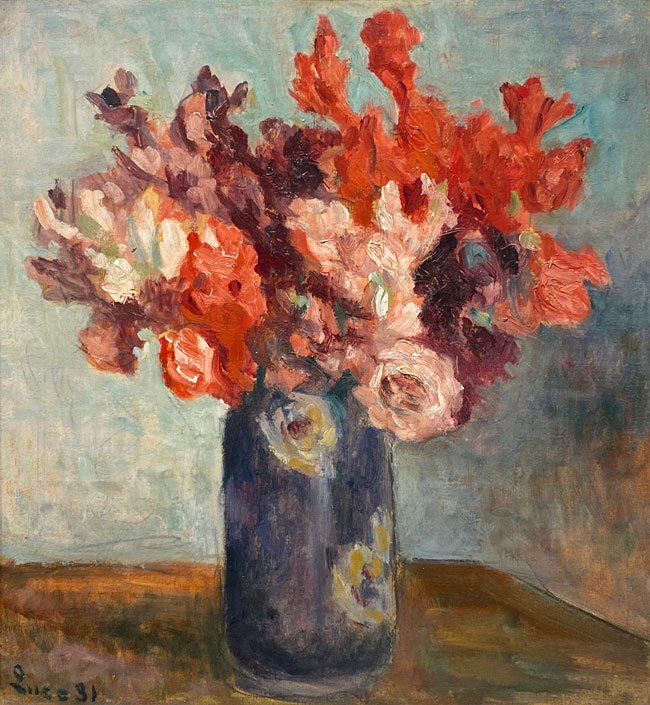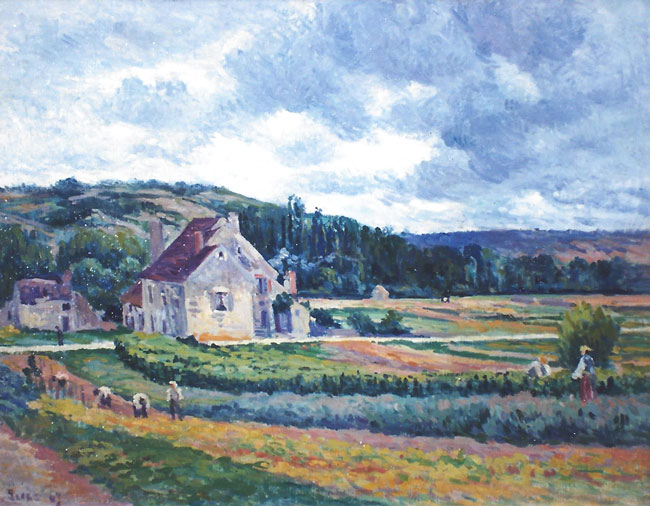MAXIMILIEN LUCE PAINTINGS FOR SALE & BIOGRAPHY
MAXIMILIEN LUCE
French, 1858–1941
BIOGRAPHY
“Maximilien Luce began an apprenticeship with the wood engraver Henri Théophile Hildibrand (1824–1897) in 1872, and simultaneously studied drawing at evening class. In 1876, having qualified as an engraver, he joined a workshop where illustrations were engraved for many French magazines and some foreign periodicals. Luce went to London in 1877, where he sold some drawings to the magazine Graphic. When he returned to Paris he was called for national service in 1879, first in Brittany, and later in Paris, where he was able to pursue his career as an engraver. During his time in the army he studied under Carolus Duran (1837–1917), probably at the Swiss academy, and worked at the École de Dessin in Les Gobelins. He was mostly self-taught from his observations of nature, and also received guidance from his friend Camille Pissarro. In 1887 he joined the Société des Artistes Indépendants and took part in their exhibitions, which were avant-garde at the time. He also exhibited with the Groupe des Vingt in Brussels in 1889 and 1892.
In his youth, the events of the Paris Commune had made an impression on him and he worked on anarchist publications such as Le Père Peinard, founded in 1889, whose cover he designed, La Feuille by Zo d'Axa, and Le Chambard by Gérault-Richard. He also worked on L'Assiette au beurre, Les Hommes d'aujourd'hui, L'Illustration, La Révolte, Les Temps nouveaux.
In 1894 he was implicated in the 'Procès des Trente' (Trial of the Thirty), which earned him a prison sentence. These events inspired a collection of lithographs entitled Mazas. He then took refuge in Charleroi in Belgium. From 1920 he was active in the area around Rolleboise.
Maximilien Luce became president of the Société des Artistes Indépendants, as successor to his friend Signac after his death in 1935. He renounced his presidency at the beginning of the German occupation as a protest against Jewish artists being forbidden to exhibit. He corresponded with many other painters, including Charles Angrand (1854–1926), Georges Seurat (1859–1891), Théo Van Rysselberghe (1862–1926) and his friend Louis Valtat (1869–1952).
With Seurat and Signac, Maximilien Luce was one of the founders of the Neo-Impressionist school, which was based on the scientific study of light and the analysis of the decomposition of colors. As such he used the technique known as Divisionism or Pointillism, using individual points of color to interpret the complexity of the composition of the colors, while preserving their vibrancy and defining the light and shadow of the elements in the picture. During his stay in Belgium he played a part in establishing Neo-Impressionism outside France. For many years he was a strict Pointillist, but he then adopted a more relaxed, more fluid technique, which can be seen in his landscapes in Rolleboise, departing from the rigor of Neo-Impressionism and returning to a late Impressionist style.
The majority of his works are landscapes, mainly of France. He painted a smaller number of urban landscapes, often of working class districts, and often painted at night, providing a snapshot of the world of work at that time. His figures set him apart from other Neo-Impressionists, as he genuinely wanted to share the cares and troubles of the people, and showed this in the attitudes of the road workers, the dockers and the builders going about their daily work” (Benezit, Dictionary of Artist, Gründ, 2006).
Museum Collections:
Art Institute of Chicago, Chicago, IL
Dallas Museum of Art, Dallas, TX
Harvard University Art Museums, Cambridge, MA
Metropolitan Museum of Art, New York, NY
Minneapolis Institute of Arts, Minneapolis, MN
Musée d’Orsay, Paris
Musée du Louvre, Paris
Museum of Fine Arts, Boston, MA
National Gallery of Art, Washington, D.C.
National Galleries of Scotland, Edinburgh
Petit Palais, Geneva
Portland Museum of Art, Portland, ME
Princeton University Art Museum, Princeton, NJ
St. Louis Art Museum, St. Louis, MO
Thyssen-Bornemisza Museum, Madrid
Please contact us if you are interested in selling your Maximilien Luce paintings or other artwork from the 19th century and early 20th century.
Mark Murray Fine Paintings is a New York gallery specializing in buying and selling 19th century and early 20th century artwork.
MAXIMILIEN LUCE
Paintings for sale
Maximilien Luce Paintings Previously Sold
MAXIMILIEN LUCE
Meules, Environs de Moulineux
Oil on board
12½ x 18 inches (32 x 46 cm)
SOLD
MAXIMILIEN LUCE
Vase de Fleurs
Oil on paper laid down on canvas
18¼ x 21¾ inches (46.4 x 55.3 cm.)
SOLD
MAXIMILIEN LUCE
Moulineux, Paysage avec Maisons
Oil on canvas
19½ x 25 inches (49.5 x 63.5 cm.)
SOLD
Additional Maximilien Luce Paintings Previously Sold
MAXIMILIEN LUCE
A River Landscape
Oil on paper laid down on canvas
12¼ x 15½ inches (31.4 x 39.3 cm.)
SOLD
MAXIMILIEN LUCE
Rolleboise, les coteaux de la Rouge Voie
Oil on paper laid down on board
12 x 19¾ inches (30.5 x 50 cm)
SOLD
MAXIMILIEN LUCE
Paysage à Moulineux (circa 1905)
Oil on board
13 x 10 inches (33 x 26 cm)
SOLD
MAXIMILIEN LUCE
Eragny, les Meules (1897)
Oil on canvas
21¼ x 28½ inches (54 x 72 cm)
SOLD
MAXIMILIEN LUCE
Honfleur, l’Entrée du Port (1929)
Oil on paper laid down on canvas
13 x 20 inches (33 x 50.8 cm)
SOLD
MAXIMILIEN LUCE
Jardin du Luxembourg et les Clochers de Saint-Sulpice (c. 1930-35)
Oil on panel
13 x 18¼ inches (33 x 46.4 cm)
SOLD











